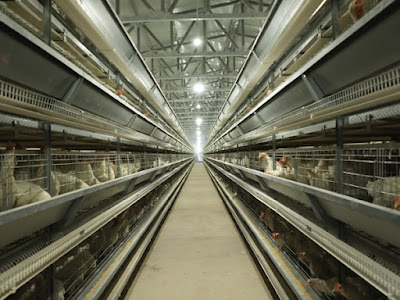(1) The imported poultry must be healthy and free from infectious diseases
First of all, large-scale farms should implement specialized breeding, insist on self-propagation and self-support or buy in batches, achieve "all in and all out", and prohibit multiple batches of polyculture to prevent cross-infection.
Regularly follow the immunization program for epidemic prevention and do a good job in vaccination. At the same time, dead birds should be removed in time, diseased and weak birds should be isolated, and residual birds should be eliminated.
(2) Breeders should enhance their sense of responsibility and awareness of epidemic prevention
Regularly observe the growth, development and dietary status of the flocks, strengthen feeding and management, adhere to the feeding principle of "prevention first, treatment second", and observe the mental performance, breathing, diet, feces, feathers and other conditions of the flocks.
The symptoms of sick birds are listlessness, white or purple crowns, drooping wings and tails, loose and dull feathers, often lying down and less standing, curled up in corners.
Once a disease occurs in a flock, it must be detected early, treated early, reported in time, and strictly sealed to prevent the spread of the disease.
(3) Strengthening health management and enhancing awareness of epidemic prevention
Poultry farms should be reared by special personnel, and non-breeding personnel are not allowed to enter the poultry house, and all visiting activities are refused.
Breeders entering the production and breeding area should change clothes and shoes, shower and disinfect.
Strictly prevent other personnel from entering the poultry farm. It is necessary to strictly disinfect the system, and the feeding utensils, poultry houses, and sports grounds should be regularly disinfected with caustic soda. A disinfection pool is set up at the entrance of the farm, and quicklime is used to pave the road at the entrance of the poultry house.
Thoroughly disinfect vehicles and related items entering and leaving the poultry farm, and strictly prevent germs or contaminated utensils, vehicles, boxes, feed, eggs, etc. from entering the farm.
(4) Regularly disinfect the poultry house and the surrounding environment, and strengthen the disinfection of chickens
It is suitable for the disinfection of chicken farms during the epidemic prevention period and the epidemic period. The disinfectant is required to be low in toxicity and less irritating.
During disinfection, the nozzle should be about 70 cm away from the chicken body, and it is not allowed to directly face the chicken head, and the mist particles should be 80-120 microns.
It is advisable to make the objects in the house wet and not flowing. Chickens should not be less than 10 days old.
(5) Strengthen feeding management, scientific feeding, and reduce the incidence of epidemic diseases
The occurrence of epidemic diseases is mostly caused by poor feeding and management or lax epidemic prevention system.
Therefore, strict measures must be taken in feeding management.
To ensure a reasonable stocking density, the poultry house should be kept dry, the air is fresh, and the light is suitable.
(6) Provide birds with good ventilation and high-quality clean feed and drinking water
Minimize the occurrence of stress reactions.
Feed a reasonable full price feed to ensure that the feed is of high quality and not mildewed to meet the needs of poultry growth and production. Sufficient and clean drinking water is provided in the house to ensure continuous water in the water tank. The disease resistance of chickens, thereby reducing the incidence of flocks.
Bleaching powder can be used for drinking water disinfection. Add 1 ml of 1% bleaching powder solution made of commercially available bleaching powder containing more than 20% effective chlorine per kilogram of water.
(7) Harmless treatment of chicken manure
Microorganisms and parasites in chicken manure are disease pathogens and must be treated harmlessly.
Generally, chicken manure should be piled up and processed: the heat generated after the chicken manure is piled up and closed makes the temperature in the manure pile up to about 80 °C, thereby killing pathogenic microorganisms and parasite eggs. The method is to dig a soil pit farther away from the chicken coop, pad a small amount of hay at the bottom of the pit, fill it with chicken manure and smear it with mud, usually for 1 to 2 months.
(8) The poultry house where the epidemic occurred
For poultry houses that have experienced epidemics, after properly disposing of the flocks and manure, all equipment such as poultry houses and sports fields should be thoroughly disinfected in a timely manner.
Feed troughs, water basins, drinking fountains, etc. should be washed and disinfected; after the poultry house is cleaned and disinfected, it also needs to be closed and fumigated.
In general, the farms that have been thoroughly disinfected should not be reared immediately, such as chickens and ducks. It is best to use them after a period of natural purification.




















